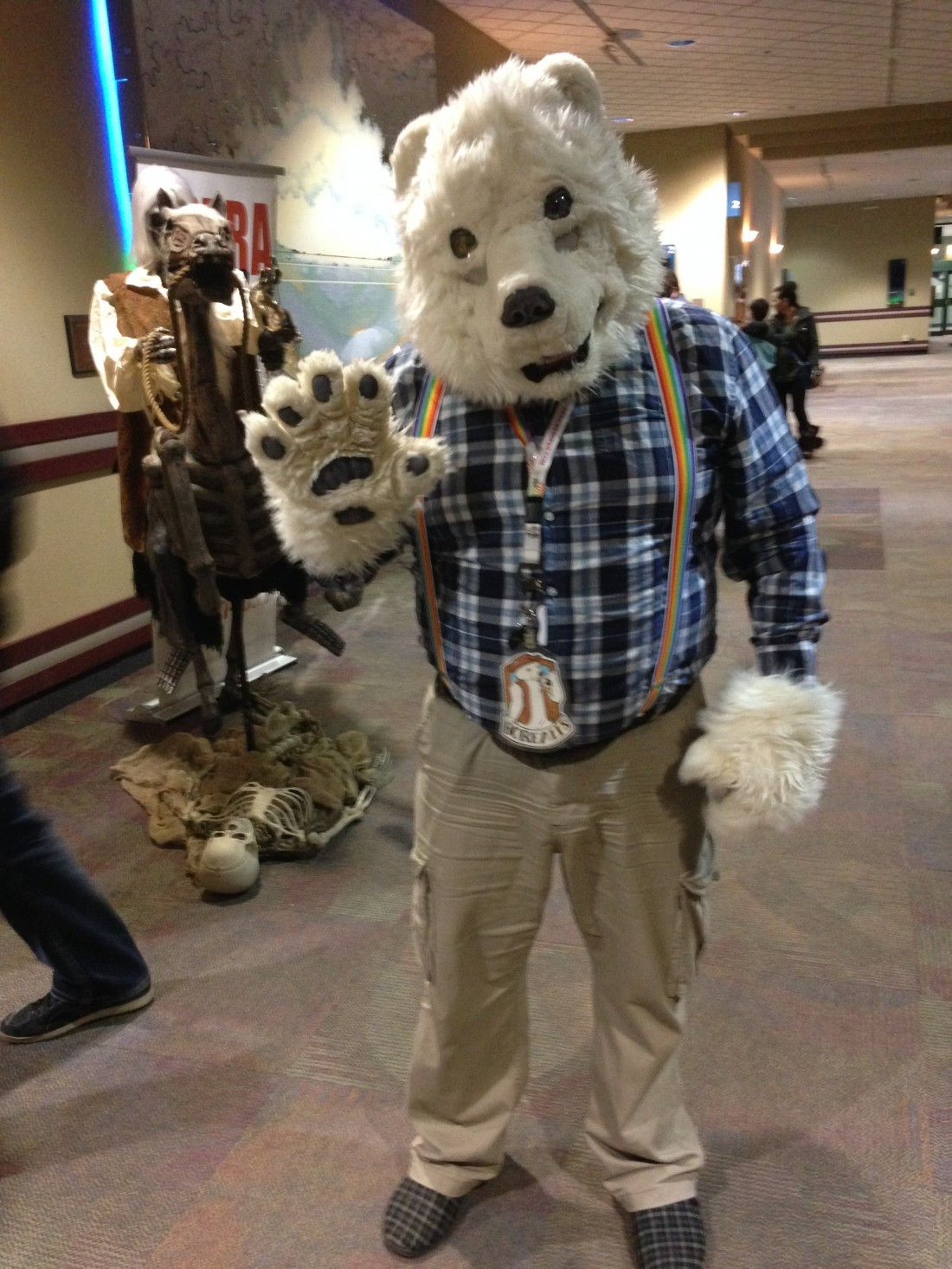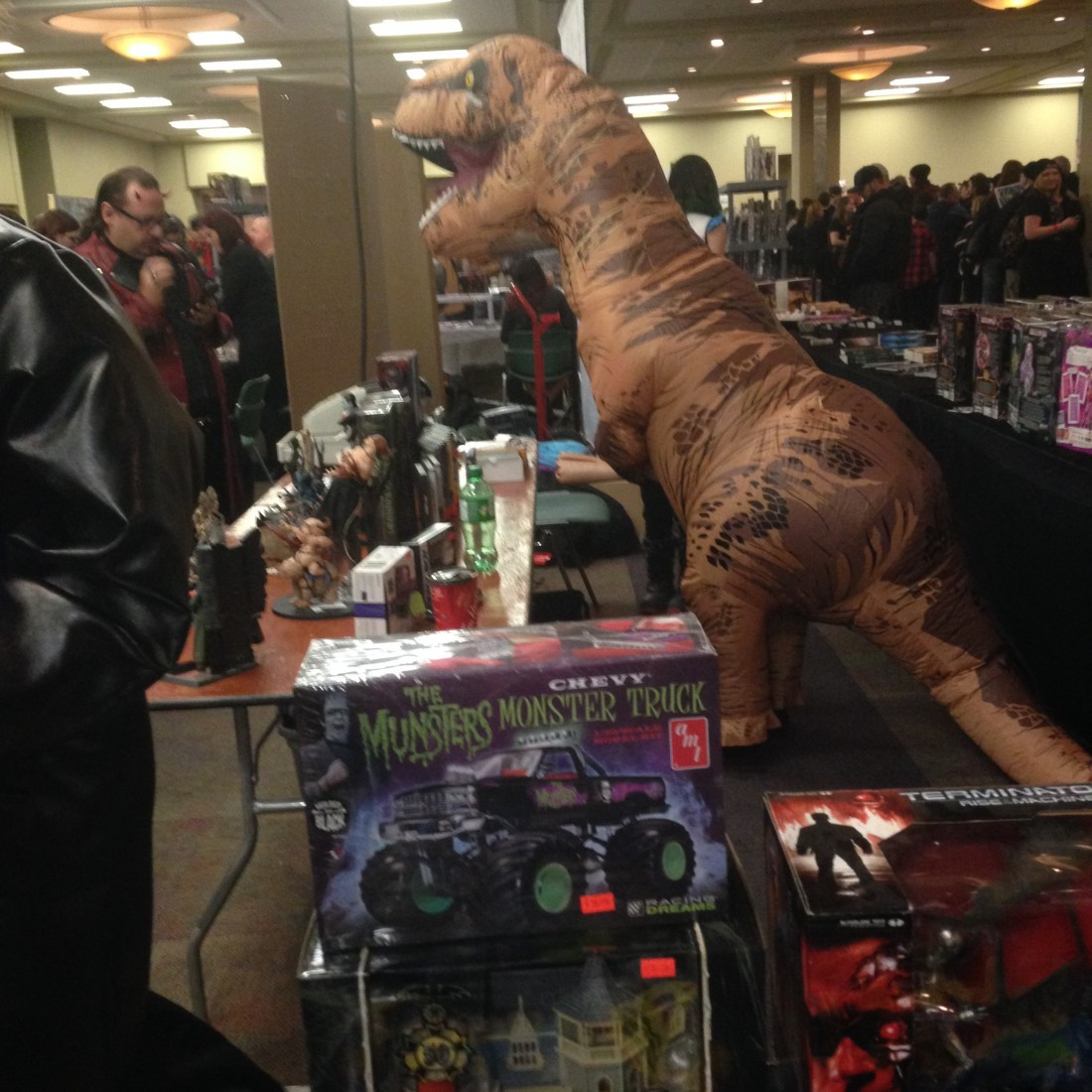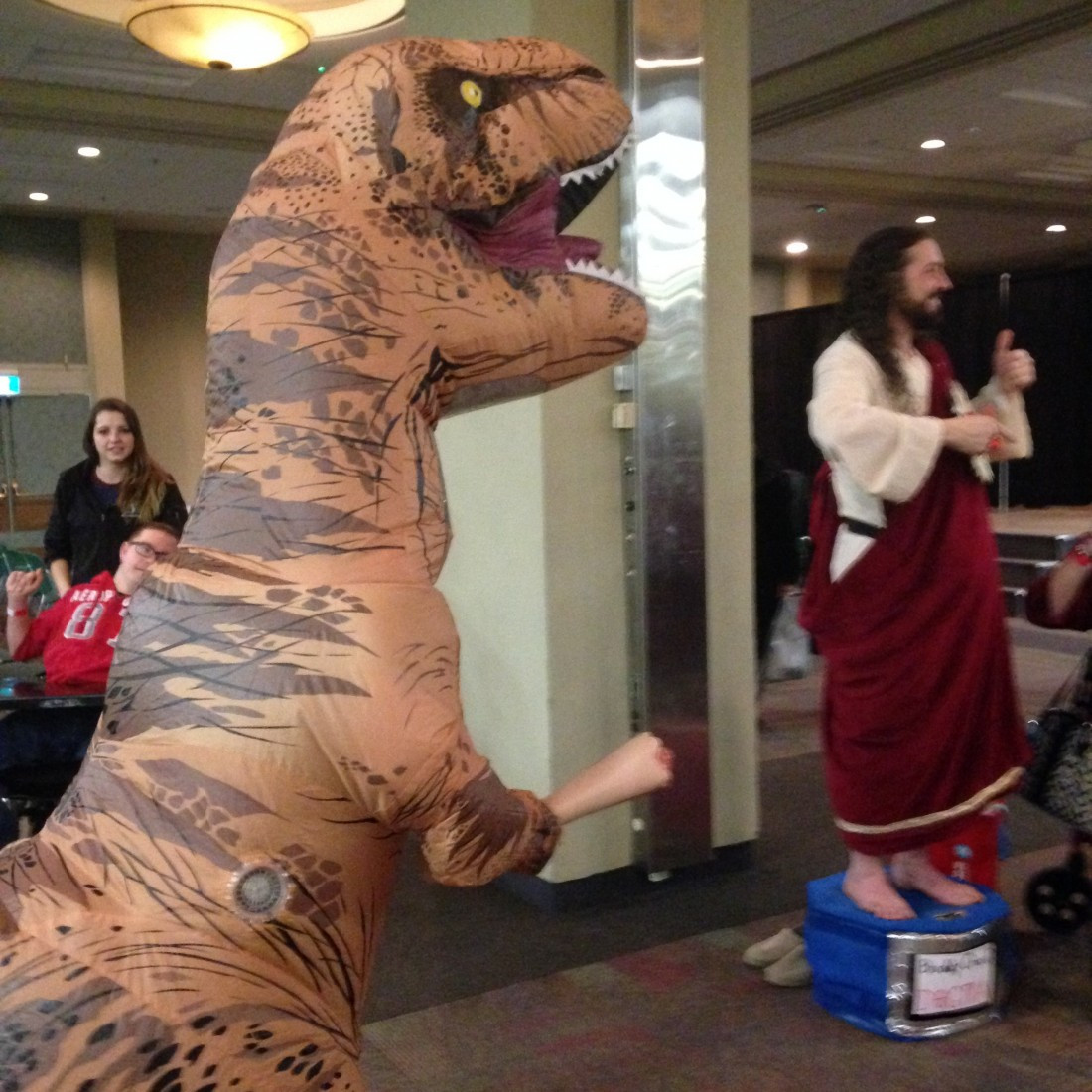Fitting in with the furries
Wild Prairie Fur flaunts its welcoming community at Horror Con
Last weekend, I headed to Horror Con to meet members of Wild Prairie Furs, an all-ages furry group in Manitoba. I was met by Sean Piper, AKA Borealis, at the entrance. He looked around for other members, but there were few.
“Getting furries together is like herding cats,” Piper says.
At its most basic form, a furry is a fan of anthropomorphic art, Piper says.
“Most furries have an affinity for animals.”
Group members, on their own and as part of Wild Prairie Furs, support many animal welfare causes, including using their costumes to bring attention to fundraisers for animal rescues.
Piper’s fursona is a polar bear named Borealis. “It was a no-brainer,” Piper says. He’s big and likes solitude.
Borealis at Horror Con.
Piper says many people get creative with their fursonas. They will combine animals together or use different colours.
You can’t do a lot with a polar bear, Piper says. So, he decided to have two different coloured eyes.
With his costume on, Piper and I walked around the convention. He let me know that his visibility was severely limited and that I was acting as his handler. My job was to stick my arm in front of him if he was about to trip or walk into something, and to stop people from harassing him.
I didn’t have to do either. A few people stopped him for photographs, but he didn’t turn many heads.
“I wasn’t expecting as much attention as Conrad,” Piper says, referring to his T-Rex costume. When we walked around together while he was in the inflatable dinosaur costume, he was stopped every few feet for several photos. Someone cleared a space on the floor to take a video of him running.
Conrad at Horror Con.
Piper says Conrad is part of their fur family. They accept “scalies,” which are animals that have scales rather than fur.
Pretty much anyone is accepted at Wild Prairie Fur meet ups, which happen about once a month.
Piper started the group on Feb. 14, 2012 with co-founder Kat Fuchs because local furries expressed a desire for a family-friendly group to host events. His group hosts alcohol-free events (except on New Year’s, because, come on, it’s New Year’s!).
They go bowling, swimming, and hang out watching movies and making art.
“You’ll find that furries like to substitute parts of the word to include ‘fur,’” Piper says. So, they’ll organize fur walks and furn-due (fondue) parties.
There’s a lot of talk about fur, but not a lot of actually wearing their costumes. Piper says that looking in on an event, you wouldn’t always be able to tell it was a group of furries hanging out. Some furries don’t even have costumes.
Furry friends, which are people who don’t identify as furries but who like to hang out with them, are also welcomed into the group.
Piper and I ran into Raymond Smith at Horror Con. He belongs to groups that dress up as characters from Halo and Star Wars. While he wears costumes in those spaces, he goes fur-free at furry events because that’s just not him.
But he feels like he fits in with the crowd, even when they’re clad in fur.
Conrad at Horror Con.
“Even though Raymond doesn’t identify as a furry, he’s an integral part of the group. He’s a friend,” Piper says. “We’re not exclusive in anyway.”
The group includes teenagers, adults, people on the autism spectrum and with anxiety disorders, and many people who identify as queer or are questioning their sexuality.
Though the group has a long list of rules that are strictly held, none have had to be specifically created to work towards creating a safe space because the group is inclusive and safe by nature, Piper says. The Facebook page does have a disclaimer that posts with inappropriate content will be removed, including bullying of members, which will not be tolerated.
“It fosters that feeling of safety,” Piper says. People feel like they can be themselves and that it is a judgment-free space.
This is important for the younger people in the group, because Piper says Wild Prairie Fur might be all they have going for them. Being a furry helps them come out of their shell and gives them a supportive environment.
And parents love it. “We encourage all parents and family to be present,” Piper says. They invite parents to check out the group and are open to answering all questions.
Piper says one underage member’s parent is a cop. The first time he dropped his child off at a meet up, he only stayed for five minutes before saying he felt they were a good group of strangers who he felt safe leaving his kid with.
Some parents leave their children with special instructions on what to do if they have an anxiety attack. Piper looked concerned as he explained how they make sure to have a complete understanding of how to take care of each member of the group.
I got this sense from just hanging out with Piper. As someone who has a lot of anxiety, I tend to panic in crowded spaces and suffer through long interviews. Being in the RBC Convention Centre, surrounded by people and spending the afternoon with a stranger, I felt strangely calm and safe.
I ran into Heather McKechnie at the entrance. She bought a tail for a social a few years ago and was mistaken as a furry, then decided to join the group. She has two fursonas: an ice tiger and a tuxedo cat.
“I’ve been judged for my looks all my life,” McKechnie says. She didn’t feel judged in Wild Prairie Furs.
“What I always tell people is, furries is good people,” McKechnie says.
Published in Volume 70, Number 20 of The Uniter (February 18, 2016)





